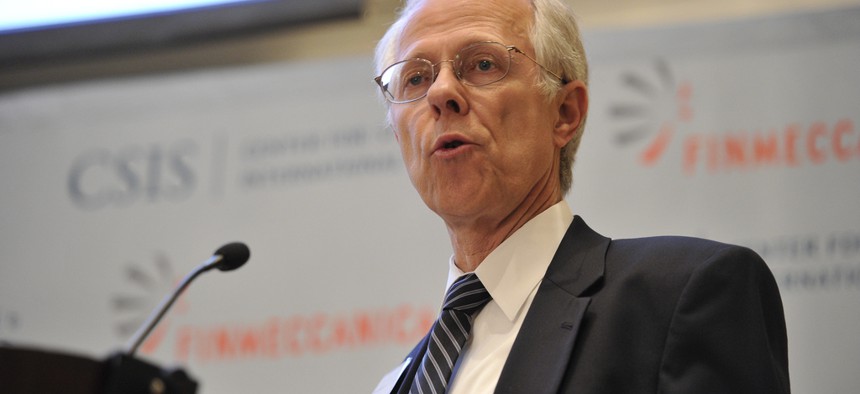
Center for Strategic and International Studies Senior Vice President David Berteau suggested several areas where personnel reform could start, including adjusting total workload. CSIS
‘Rightsize’ Defense Civilian Workforce, Analysts Say
Reforms needed to protect national security priorities, they tell Hagel.
A group of Washington think tank analysts on Monday encouraged Defense Secretary Chuck Hagel and congressional leaders to “rightsize” the Pentagon’s civilian and contractor workforce to contain rising personnel costs and bloat.
The 25 analysts—ranging from both ends of the political spectrum—said in a letter that “the size and structure” of the civilian workforce needs reform. They said the “changing needs of a downsizing military and shifting strategy” no longer correlates with the current number of civilians at the Defense Department.
“None of these reforms will be easy, painless or popular,” the analysts wrote. “But they are absolutely essential to maintaining a strong national defense over the long term.”
During an event on Capitol Hill Monday to discuss the letter, Center for Strategic and International Studies Senior Vice President David Berteau suggested several areas where personnel reform could start. He said Defense had to adjust the department’s total workload, better manage the workforce, and avoid hiring on more contractors to do the work of cut civilians.
Although more 200,000 civilian jobs were cut during the last military drawdown after the end of the Cold War, the total workload didn’t change and was instead given to contractors, whose numbers now rival or exceed the size of the civilian workforce, Berteau said.
He added: “What we’ve seen over the last 20 years -- you build it up, but you never draw it back down.”
Stimson Center distinguished fellow Gordon Adams said the politics of cutting the Defense budget and possible reductions in the amount of money spent in areas such as the operation and maintenance budget, make rightsizing the workforce especially difficult. He said failure to reform would dry up funding for other priorities.
“You will have nothing in place if you don’t grapple with these issues,” Adams said.
Union officials immediately condemned the proposals. American Federation of Government Employees National President J. David Cox Sr. said the suggestions were “academically lazy” and ignored many other costs and figures. He cited a figure from former Defense Secretary Robert Gates who said that insourcing—that is, hiring additional federal employees—yielded savings of nearly 25 percent over contractor costs.
“It seems easy to pick on the federal employee, labeling him or her as a faceless bureaucrat, because civilian personnel and the associated costs are the most readily identifiable,” Cox said in a statement “But transparency doesn’t equate to what’s most expensive. It is usually what you can’t see that will kill you, and that is exactly what is happening with the shadow workforce of contractors, which has exploded since 9/11 and even before.”
Other ideas, as proposed by Brookings Institution senior fellow Michael O’Hanlon and American Enterprise Institute resident fellow Mackenzie Eaglen, included a domestically focused round of the Base Closure and Realignment Commission process. They said previous attempts to shutter military facilities had focused on overseas bases, where Congress has long encouraged the Pentagon to close installations. Both argued that the time had come to bring that same focus back stateside.
“You can’t reduce end strength, particularly active-duty end strength, and ignore the physical assets where those people would have slept, trained, or eaten,” Eaglen said
The letter followed a shadow budget review held by the Center for Strategic and Budgetary Assessments last week, which said that massive cuts to Defense’s civilian workforce would allow the Pentagon to save money for other priorities, such as cyberwarfare and the pivot to Asia.







